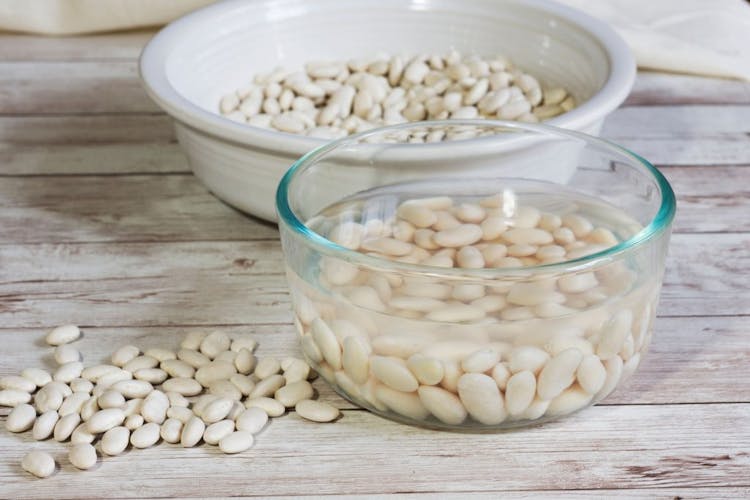Fiber Benefits That Go Way Beyond Poop
Published | 4 min read
Adding more fiber-rich foods to your diet can help regulate blood sugar levels, control appetite, and even boost your mood. Read more incredible fiber benefits here.

Fiber benefits don’t just apply to your digestive system. Did you know that eating more fiber is good for your brain, heart, and immune system, too?
Additional benefits include better insulin control and weight loss. But how much fiber do you need to eat to see improvements in your health?
In this guide, you’ll learn about all things fiber, including the different types, and how to get more in your diet.
What Is Fiber?

Dietary fiber, or the fiber we eat, is a plant material that resists enzymatic digestion. In other words, dietary fiber cannot be broken down and absorbed by our body, unlike substances like fats or proteins.
When we consume fiber, the nutrient will simply pass through our digestive system before being removed from our body through excretion.
For this reason, it’s advisable for people who are looking to reduce their weight to eat more fiber because it can help them control their appetite. Fiber can keep us full without having to consume more calories.
Types Of Fiber
Dietary fiber is usually divided into two basic categories based on its solubility: soluble fiber and insoluble fiber.
Soluble fiber
Soluble fiber has a few characteristics. It is:
- Dissolvable in water
- Well-fermented by the bacteria in the large intestine
- Able to bypass the digestion process in the small intestine
- Able to increase the food’s transit time through the digestive system, resulting in slower blood sugar absorption
- Gel-like after dissolution in water
Soluble fiber also known as fermentable fiber or prebiotic fiber, it can take many forms, including pectin, gums and mucilage, beta-glucan, inulin, and resistant starch. Foods potent with soluble fiber include:
| Pectin | Gums and Mucilage | Beta-Glucan | Inulin | Resistant Starch |
| Fruits | Guar gum | Oats | Onions | Bread |
| Vegetables | Guar arabic | Barley | Garlic | Pasta |
| Legumes | Locust bean | Yeast | Wheat | Legumes |
| Sugar beet | Seaweed extract | Algae | Artichoke | Nuts |
| Potatoe | Vegetables | Mushrooms | Bananas | Firm bananas |
| Psyllium husk | Whole-grain cereal |
Insoluble fiber
Insoluble fiber is different from its soluble counterpart. It:
- Doesn’t dissolve in water
- Is less fermented in the large intestine
- Doesn’t turn to gel
- Adds bulk to the stool, thus solidifying it
- Increases excretion of bile acids, which help with cholesterol conversion
- Decreases the food’s transit time through the digestive system
Insoluble fiber can be broken down into three forms, such as cellulose, hemicellulose, and lignin. Foods that have insoluble fiber include:
| Cellulose | Hemicellulose | Lignin |
| Vegetables | Whole grains | Fruits/Vegetables |
| Whole wheat | Brans | Flaxseed |
| Whole grains | Nuts | Wheat bran |
| Sugar beet | Legumes | Seeds |
| Brans | Green beans |
In short, fiber is mostly found in cereals, vegetables, fruits, nuts, bread, and whole grains. Moreover, it can also be utilized to fortify foods, snacks, and beverages.
For example, you can add pectin, guar gum, and inulin during cheese processing to decrease the fat content. Meanwhile, you can incorporate oats into drinks like cappuccinos, juices, milkshakes, and sports beverages. It can also be used to make porridge and wine.
How Much Fiber Should I Eat?
Adults should eat between 20g to 35g of dietary fiber every day. As they‘re available in different amounts in various foods, it’s best to consume both soluble and insoluble fibers. This is important because fiber’s composition can change when you cook or change the temperature of your food.
For instance, resistant starch forms when cooked foods turn cool. Examples include rice, pasta, and potatoes. In contrast, the heating of starchy foods can deplete their resistant starch levels.
If you have a hard time getting fiber-rich foods into your diet, then you may benefit from taking a fiber supplement. This is a great way to help curb your appetite, stabilize insulin levels, and improve digestion and immunity without buying and cooking all of the foods mentioned in the section above.
Fiber Benefits Beyond Digestion

Strengthening your gut health is imperative for many aspects of health. In fact, your digestive system is often referred to as your “second brain,” due to its influence on mood, appetite, and cognition.
Additionally, the majority of your immune cells reside in your gut. Eating fiber-rich foods promotes the growth of healthy bacteria in the gut with many amazing fiber benefits that pertain to all areas of health.
Here are some other fiber benefits to be aware of:
- Regulation of appetite
- A prebiotic, feeding the friendly bacteria
- Ability to lower blood sugar levels
- Reduce the risk of heart diseases and diabetes
- Improve bowel functions and relieve constipation
- Decrease the risk of colorectal cancers
Different types of fiber can be found in a wide range of foods and beverages. Variety is the key to getting the most out of the nutrient. Remember, healthy eating could make all the difference in your overall health. Add more fiber to your diet today.
This is an adaptation of an article, “3 Types of Dietary Fibres to Make You Feel Full,” which first appeared on Eu Yan Sang’s website.
References
- National Center for Biotechnology Information. 2012. Dietary fibre in foods: a review
- Research Gate. 2017. The Interaction Between Insoluble and Soluble Fiber
- CSIRO. 2021. Resistant starch facts
- NIH. 2016. The Second Brain: Is the Gut Microbiota a Link Between Obesity and Central Nervous System Disorders?
Share this article on






